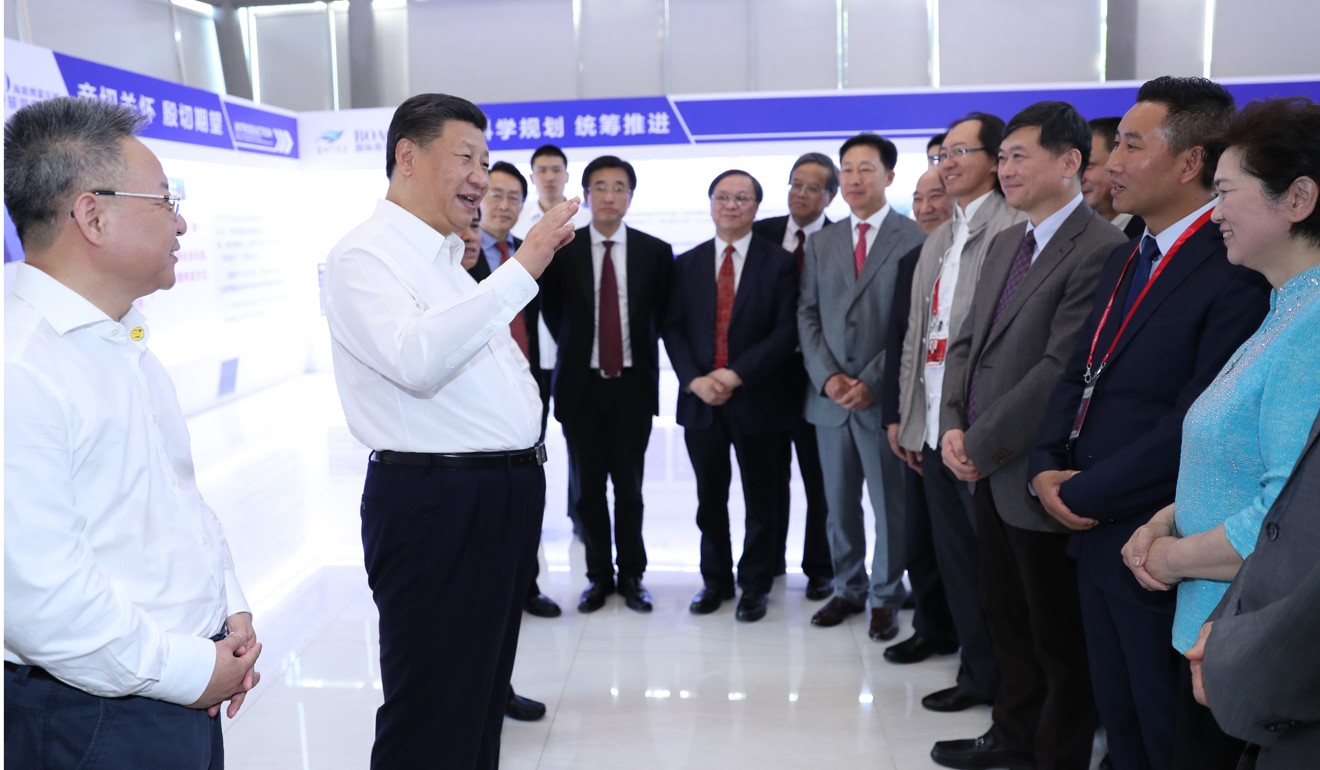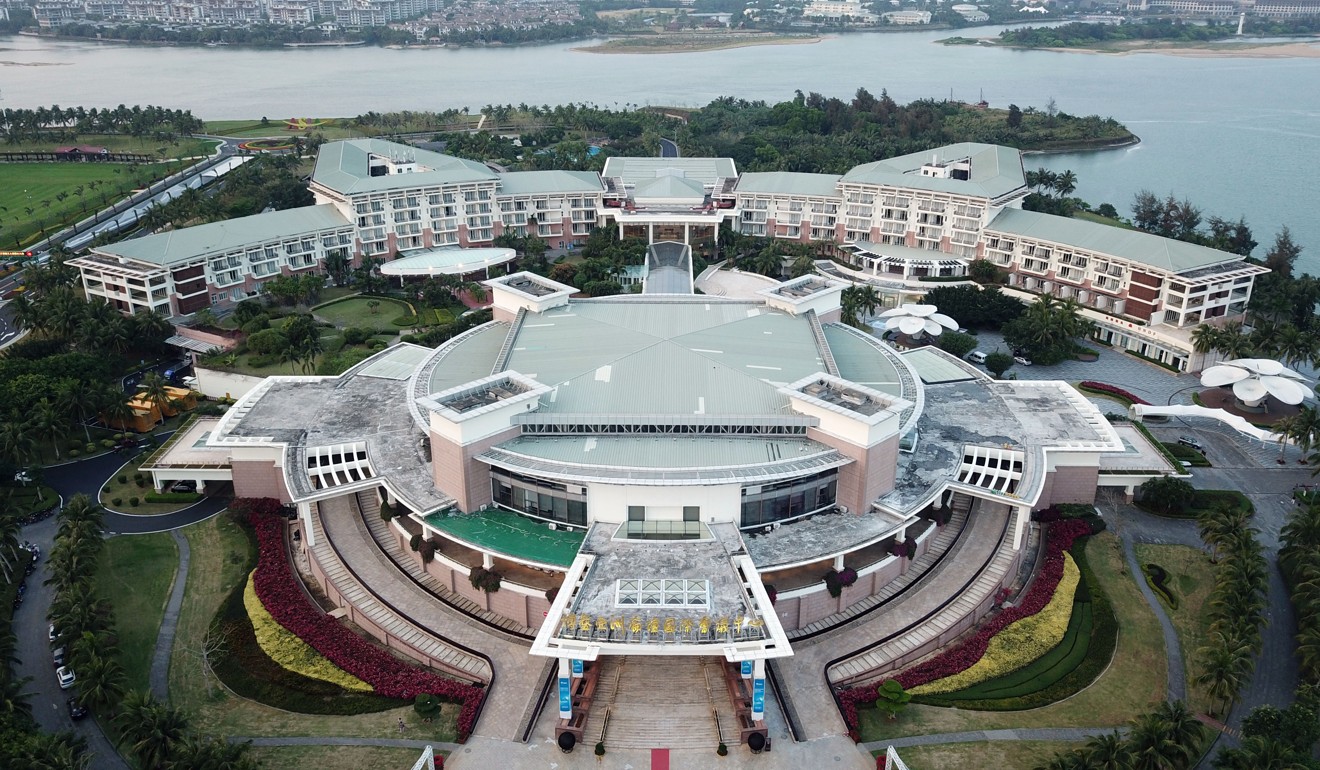
China taking direct aim at US with Indo-Pacific trade strategy, expert says
The proposal is seen as a response to Washington’s efforts to boost Indo-Pacific alliances to rein in Chinese military deployment and investment
Beijing’s plan to open up “China’s Hawaii” as a gateway for Indo-Pacific investment and economic ties is an attempt to counter the United States’ efforts to form alliances against China in the region, analysts say.
The Hainan plan, unveiled by President Xi Jinping in Haikou, the provincial capital, on Friday, will have “genuine value” for China’s trade with countries in the Southeast Asian and Pacific regions, according to Iris Pang, chief Greater China economist with banking and financial services provider ING.
The proposal comes as Washington works to build up its alliances in the Indo-Pacific region, including the Indian Ocean and the western and central Pacific Ocean, covering nations including Australia and India.

Washington’s moves are seen as an attempt to counterbalance Beijing’s increasing military deployment and investment in the region, especially through its massive infrastructure plan, the “Belt and Road Initiative”.
Manoj Joshi, a distinguished fellow at the Observer Research Foundation in New Delhi, described the Hainan development plan as a response to Washington’s “Indo-Pacific strategy”.
‘China’s Hawaii’ set to become pilot free-trade port
“It’s a major easternmost maritime facility for China, and China has been quite active in the Indian Ocean in the past decade or so,” he said.
“China is already an Indo-Pacific power – it has significant economic commitments in the region.”
The free-trade port that is to be “basically established” in Hainan by 2025 and “mature” by 2035, according to government guidelines issued on Saturday, will allow this holiday island – home to 9.3 million people and sometimes called “China’s Hawaii” – to benefit from more opening-up policies, economic freedom and market access.
Building Hainan, which is already a special economic zone, into an important gateway to China for countries on the Indian and Pacific oceans is in keeping with the “new trend of economic globalisation”, according to the guidelines.
The island province – which is 30 times larger than Hong Kong, covering 35,000 sq km (13,500 square miles) – will be allowed to develop its information technology capabilities in big data, satellite navigation and artificial intelligence, health care and deep-sea research.
Ball in Trump’s court as Xi champions free trade at Boao Forum
It will become home to an offshore innovation centre, as well as exchanges for energy, shipping, commodities and carbon trading.
China will also allow horse racing and new types of sports lotteries on the island under the plan.
Gurpreet Khurana, executive director of the National Maritime Foundation in India, concurred that the Hainan plan is China’s riposte to the Trump administration’s Indo-Pacific strategy.

“They are focusing on their ultimate national objective … the economic and material well-being of their people, which finds appeal in the countries that are partnering with China on its belt and road plan,” he said.
Hainan enjoyed a construction boom three decades ago when it was deemed a special economic zone, similar to Shenzhen. Amid a massive surge of property development on the island, Beijing moved to restrain the country’s credit risk in 1993, dashing hopes of an economic surge.
Shares of Hainan linked firms gallop on horse racing, lottery plans
Zhang Jun, chief economist at Morgan Stanley Huaxin Securities, said the latest development strategy for Hainan was “far higher” in significance than its early 1990s predecessor.
“It will be implemented by the central government against the backdrop of building a maritime power and pushing forward the ‘Belt and Road Initiative’,” Zhang said.

Liu Zongyi, senior fellow for Asia-Pacific Studies at the Shanghai Institutes for International Studies, said the Hainan strategy was largely an economic plan, but it acknowledged the province’s ability to play an important role safeguarding China’s interest in the South China Sea.
China backs horse racing and new sports lotteries in Hainan
“China has naval bases in the South China Sea, so Hainan is critical for maintaining stability and peace there as well as the security of China’s resource and imports and exports, so there are safety considerations,” he said.
“These considerations are parallel: in order to protect your economic prosperity, you need to have this security shield.”

Richard A. Bitzinger, visiting senior fellow with the Military Transformations Programme at the S. Rajaratnam School of International Studies, said a more developed Hainan would serve as “a better jumping-off point for the Chinese military”.
“The island is already home to a major base for nuclear submarines,” he said. “Hainan is a good base for reinforcing Chinese military facilities in the South China Sea, especially Woody Island and the artificial islands in the Spratlys.
“And it puts the Chinese military and economic capability about as close as possible to the Malacca and Singapore straits and the entry into the Indian Ocean.
“In other words, Hainan is a win-win for China. It is geographically well suited for the ‘Belt and Road Initiative’ and politically safe as well. Modernising Hainan can only help China’s presence in the south.”
China’s economy isn’t opening. It’s closing – and it’s hurting itself
Xi’s announcement came on the heels of his keynote speech at the Boao Forum, dubbed Asia’s Davos, last week.
In that address, China’s leader differentiated himself from US President Donald Trump by opting not to use the moment to launch another round of retaliatory duties on American exports to China.
Instead, he said that while not seeking trade surplus with any country, China was ready to increase imports that were needed by the Chinese public.
He also promised to remove trade barriers and open the Chinese market further by lowering tariffs on a range of foreign goods, easing restrictions on foreign ownership in Chinese companies, opening further the capital and insurance sectors and protecting the intellectual property of foreign companies doing business in China.


